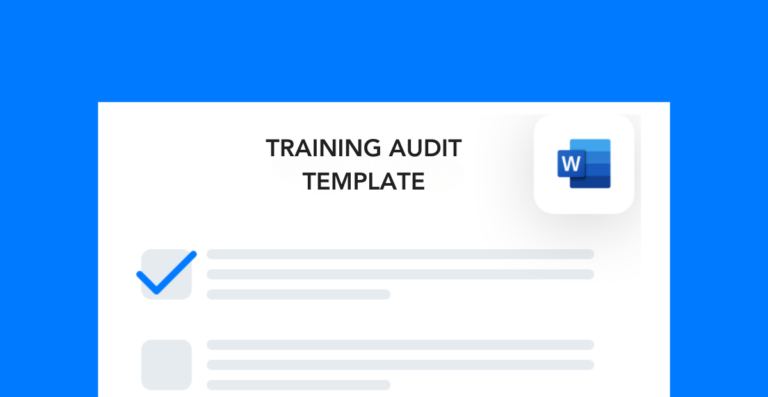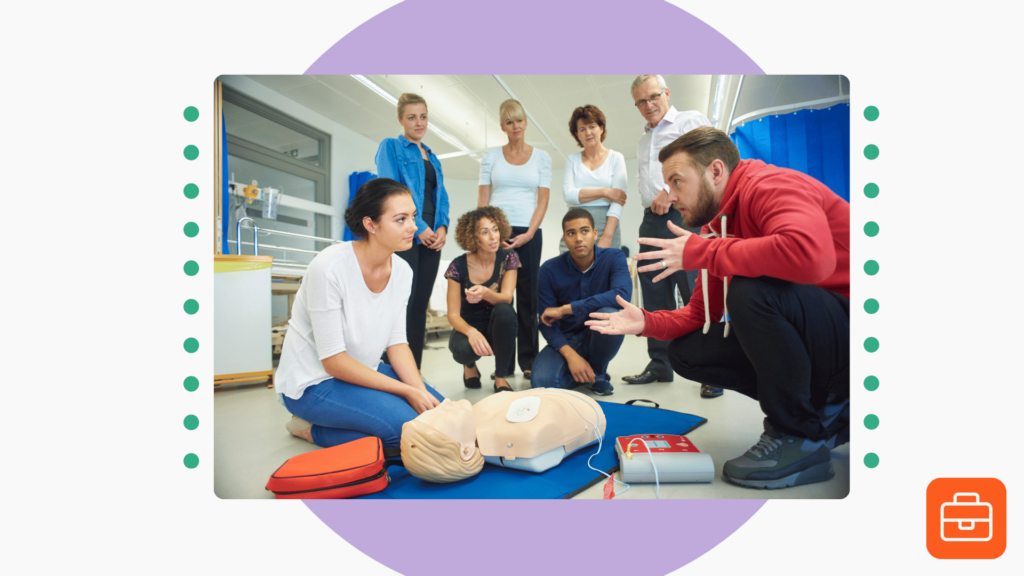Developing an effective training program takes time and a good amount of trial and error. That’s why it’s important to frequently audit your approach. This training audit checklist breaks down your courses into individual components for review.
Training audit criteria
A best practice for conducting workplace audits is to use the same criteria each time. That’s so you can compare audit results over time, making note of major changes or issues that come up. The three main pillars of training that you should audit include:
- Purpose and objectives
- Content
- Documentation
Each of the following sections covers these three pillars in detail and provides suggestions for what to assess and potentially change.
Purpose and objectives
Every training course you do should have a very clear purpose. Don’t waste your time doing training that isn’t required or necessary to improve productivity, quality, or safety. When auditing your training program, make sure to answer these questions:
- Does the training align with an organizational objective?
- Does the training meet regulatory requirements for its subject matter (if applicable)?
- Does the training have a clear and relevant topic for the type of work onsite?
- Does the training adequately address the needs of the department, process, etc.?
If the purpose of a training module is unclear or unaligned with your operational goals, consider changing it or removing it from your program. That way, you can redirect resources to only those courses that have a purpose.
Content and materials
Having high-quality content is what takes your training program to the next level. After all, the worse your training materials, the less effective the courses will be. You want to develop content that is accurate, engaging, and comprehensive. These are the things you should be looking for when you audit your training content:
- Is the content accurate?
- Does the content include the most recent regulations, best practices, etc.?
- Do the pictures and/or videos in the content match the actual settings, equipment, etc. that workers will use in their roles?
- Is the content easy to follow, especially for virtual training courses?
- Does the content cover the training topic in depth and completely?
- Is the content specific to the company’s processes and policies?
- Does the training include interactive elements (role plays, group exercises, etc.)?
- Does the content cover all the required information for regulatory purposes?
Of course, you should also take time to review the grammar, phrasing, and overall aesthetic of training content. In the digital age, workers are becoming more receptive to the visual component of training materials. The better your visuals, the more likely your team is to be engaged with the lesson plan.
Documentation of training
Proper training documentation is essential for multiple reasons. First, OSHA requires companies to keep detailed records of all safety training. This standard ensures that all employees receive process-specific training aimed at keeping them safe while on the job.
Second, documenting training is essential if you want to maintain performance standards throughout your company. For litigation purposes, it’s a good practice to be able to prove that workers went through training to help them succeed in their roles.
And lastly, setting high standards for documentation in general is an easy way to improve overall site performance. The better your team documents things like training, inspections, audits, etc., the better prepared they’ll be to record major incidents like injuries or security breaches.
Include these line items on your training audit checklist to ensure proper documentation:
- Is there a detailed site safety training plan for trainers to reference?
- Does the training plan clearly explain the requirements for each course?
- Are the training materials stored in an accessible, central location?
- Are there dedicated training logs for this course?
- Are training logs filled out in their entirety with attendance and completion information?
- Are the training logs stored in an accessible, central location?
Using an LMS to document training
If you’re using a manual method of documenting workplace training, consider upgrading to a learning management system like Frontline LMS. An LMS allows you to schedule, assign, and track all training for your employees.
And because everything’s stored in the cloud, you can access it from anywhere. That way, your team can easily see progress and build reports on what’s upcoming or past due. To learn more about Frontline LMS, check out the video below or schedule a demo with our sales team.





